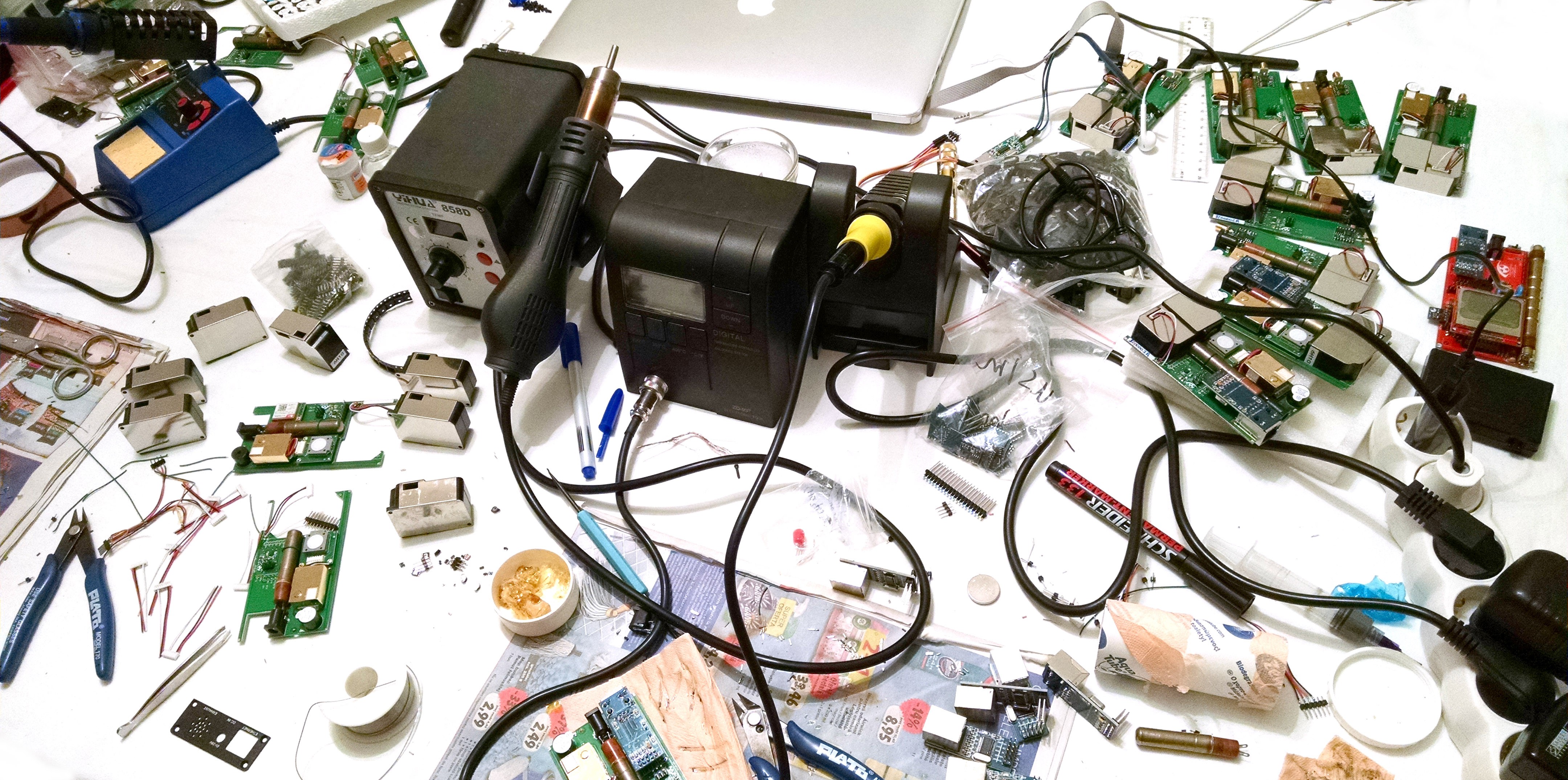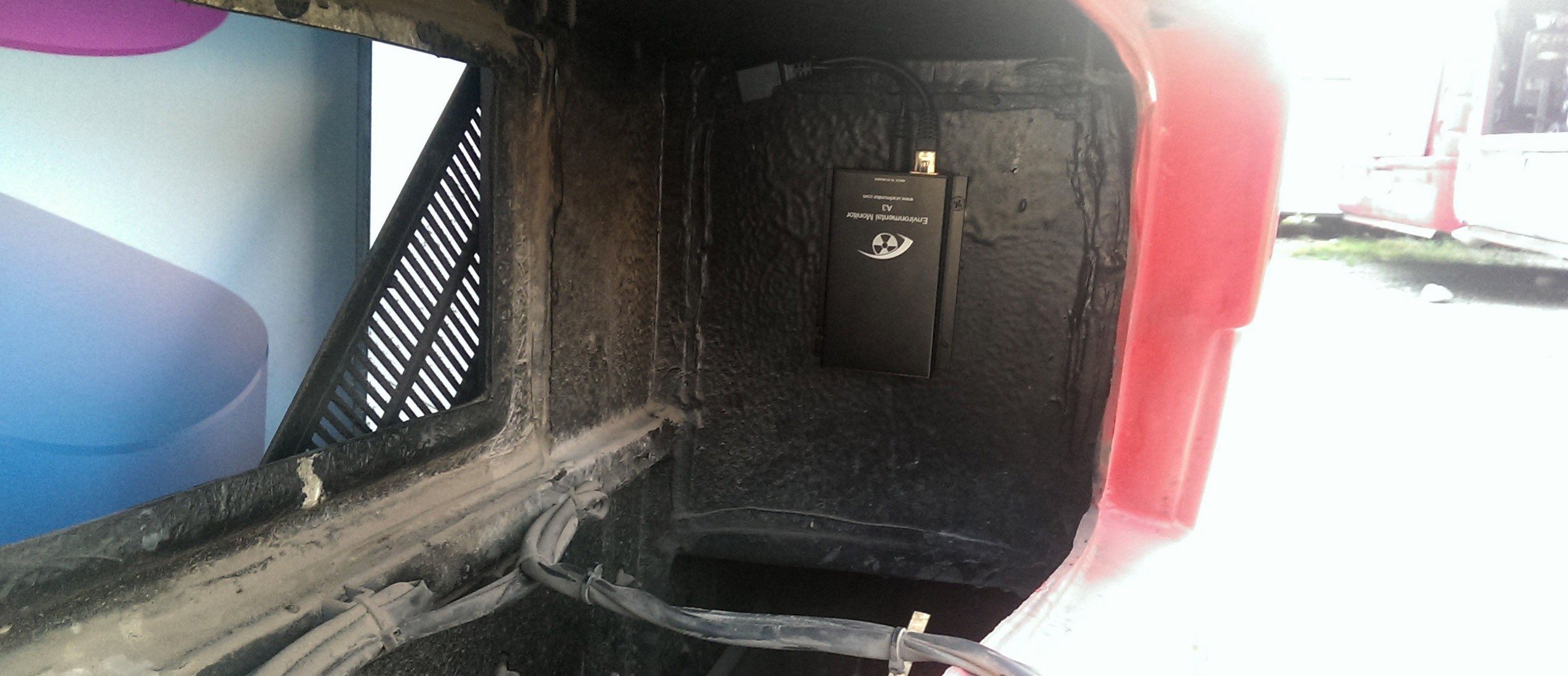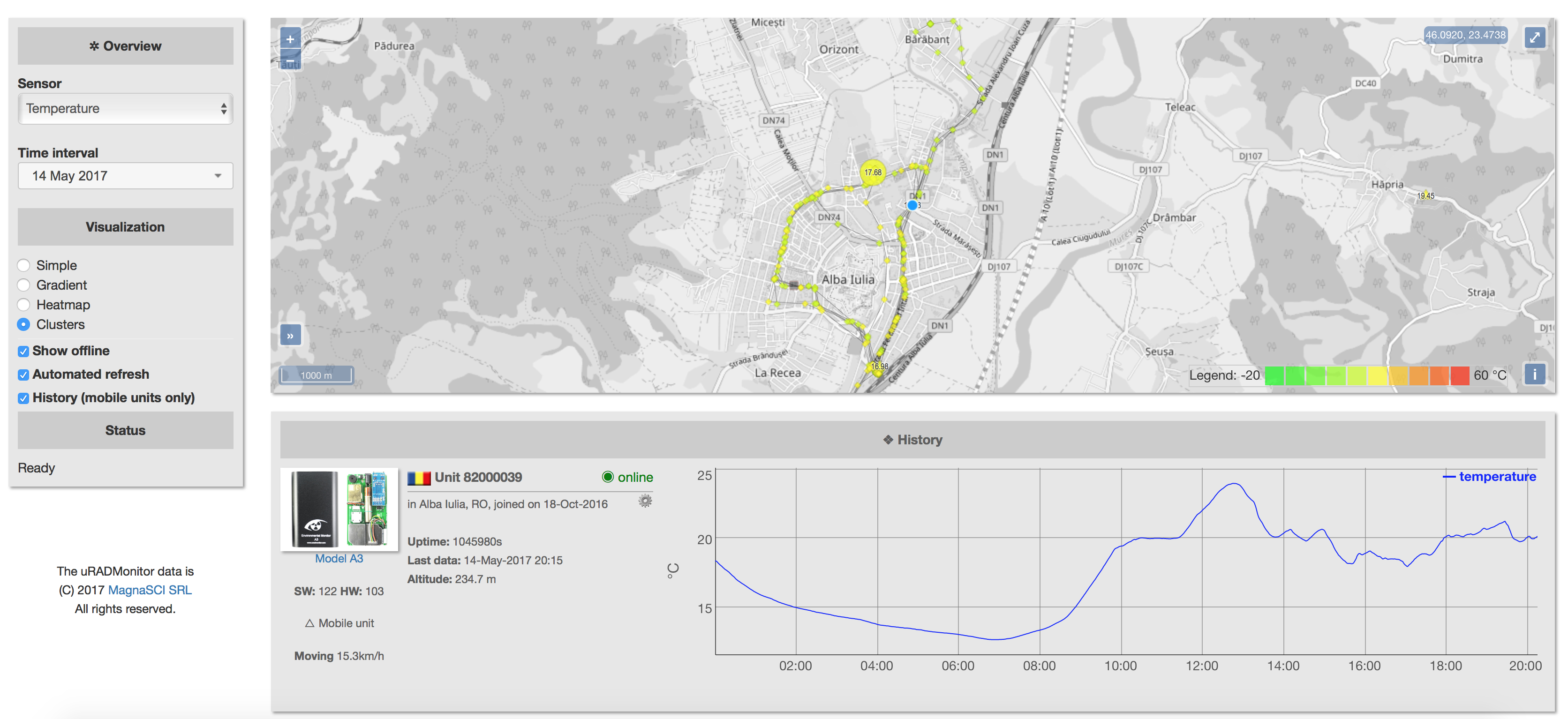Here's the new PCB layout, HW103, with multiple changes: new PM2.5 sensor footprint to match the current factory version, removed zener/mosfet based DC In protection circuit in favour of a better DC-DC 6-28V converter circuit, allowing operation on variable input voltages and finally a new aluminium enclosure with wall mounting brackets to make installation easier.
 The previous rounded aluminium boxes where neat, but installing those in buses was problematic. I had to opt for a different aluminium profile, and do the manufacturing all over again, including new holes and silkprint. With this variant I also needed different holes first for the Ethernet variant, and a new panel for the radio boards that replaced the cable for the SMA connector holding the antenna.
The previous rounded aluminium boxes where neat, but installing those in buses was problematic. I had to opt for a different aluminium profile, and do the manufacturing all over again, including new holes and silkprint. With this variant I also needed different holes first for the Ethernet variant, and a new panel for the radio boards that replaced the cable for the SMA connector holding the antenna.

The above picture shows a LoraWAN A3 unit operating from below ground level, in a cellar. The same unit was tested to successfully connect to the gateway from about 2km distance with just that tiny antenna. Surely, it can do much more, as the datasheet mentions the 15km figure.
These units performed great! For me it was a busy summer assembling a few tens of these, for a new partnership started with Orange, as a result of winning the Innovation Labs 2016 competition.

Some of these units went in Alba Iulia, the first Romanian Smart City, others in Bucharest. The major benefit that came out of this was that I had the chance to work with city data, see the major pollutants, but also understand how the hardware behaves in the field. I can say that the units were very resilient, considering some of them got installed in buses, withstanding vibrations and harsh conditions during winter/summer.

A passive POE adapter proved useful to simplify the installation in buses, for the city of Alba Iulia.

The DC-DC built in converter was extremely useful, given the various voltage lines available in buses. These converters would output a nice and clean 5V voltage for the uRADMonitor A3 internals. The solution passed its QA tests, and I am very happy with it.
These buses also have a GPS receiver, part of a different system, and the position data is aggregated to the uRADMonitor A3 air quality data. This way I was able to build a real time map, and see the readings based on location (both spatial and temporal coordinates):

This is available online on the uRADMonitor portal, or on the Alba Iulia #Smartcity dashboard.
 Radu Motisan
Radu Motisan
Discussions
Become a Hackaday.io Member
Create an account to leave a comment. Already have an account? Log In.